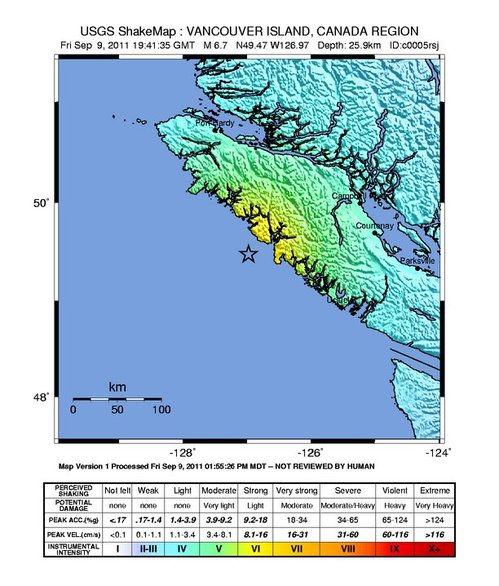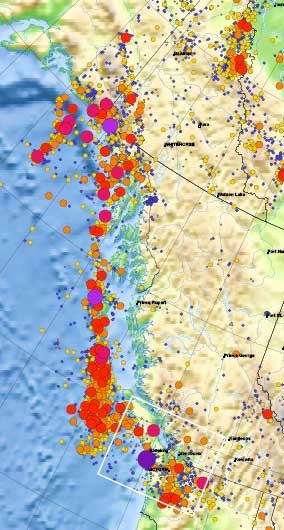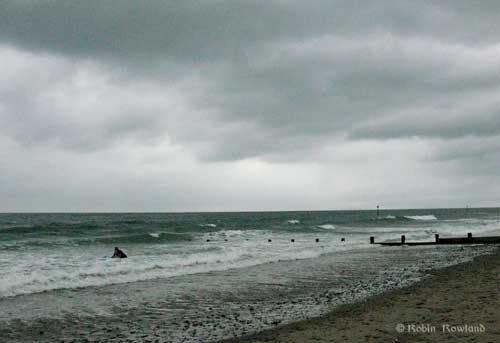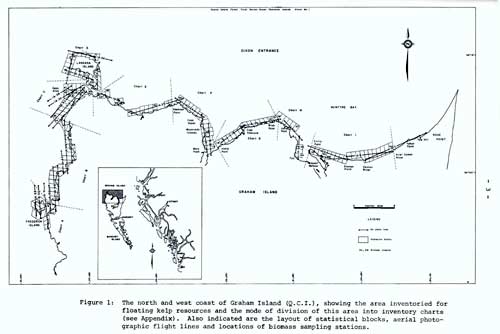Energy Business Tankers
 A tanker entering Prince Rupert harbour. (Robin Rowland/Northwest Coast Energy News)
A tanker entering Prince Rupert harbour. (Robin Rowland/Northwest Coast Energy News)
The world’s oil tanker companies are in financial meltdown, a crisis little noted outside the industry itself and the financial media, a crisis caused, experts say, by combination of the weakening world economy and an over abundance of the giant vessels that ply the world’s oceans filled with crude .
Although oil prices are generally on the rise, this has not helped the tanker fleets, because overall demand for oil is down and there is a “glut” on the tanker market, with too many vessels, so chartering and transportation fees are dropping. ( One ship broker reports that “day rates for leasing tankers” have dropped 47 percent since the start of 2010. Rates for tankers were $229,000-a-day at the peak of the market in 2007. By mid-November that had dropped to $28,829).
The crisis in the tanker industry first hit the financial news in mid-November.
 On November 16, 2011, Torm, a Danish tanker company warned investors that it was revising expectations and stated that the company expected to lose $175-$195 million US (pdf) for 2011, because freight rates in the second half of 2011 for tankers, especially the large tankers, had been “lower than expected.”
On November 16, 2011, Torm, a Danish tanker company warned investors that it was revising expectations and stated that the company expected to lose $175-$195 million US (pdf) for 2011, because freight rates in the second half of 2011 for tankers, especially the large tankers, had been “lower than expected.”
 On November 17, 2011, General Maritime Corp., a New York based major American crude transportation company that describes itself “one of the world’s largest and most diverse fleets of tankers, filed for Chapter 11 bankruptcy. GMC is said to be the second largest American flagged crude carrier.
On November 17, 2011, General Maritime Corp., a New York based major American crude transportation company that describes itself “one of the world’s largest and most diverse fleets of tankers, filed for Chapter 11 bankruptcy. GMC is said to be the second largest American flagged crude carrier.
According to Reuters,the same day, Torm told the markets it was in talks with creditors. Three days later, on Nov. 20, Torm (pdf) cancelled an order for a new tanker that would have been delivered in 2013.
 On Nov. 22, Frontline Ltd, based in Bermuda, reported that the company could run out of money in early 2012. Frontline has one of the world’s largest tanker fleets, including Very Large Crude Carriers. The company has $1 billion in bonds and loans due in the coming decade, and is looking for new cash.
On Nov. 22, Frontline Ltd, based in Bermuda, reported that the company could run out of money in early 2012. Frontline has one of the world’s largest tanker fleets, including Very Large Crude Carriers. The company has $1 billion in bonds and loans due in the coming decade, and is looking for new cash.
 On Nov. 23, ACM Shipping, a British company, told The Financial Times that company was taking a £6.85 million write-off largely due to poor market conditions. The paper added that ACM had strong cash reserves and ACM CEO Johnny Plumbe was confident about ACM’s medium to long-term prospects.
On Nov. 23, ACM Shipping, a British company, told The Financial Times that company was taking a £6.85 million write-off largely due to poor market conditions. The paper added that ACM had strong cash reserves and ACM CEO Johnny Plumbe was confident about ACM’s medium to long-term prospects.
The Financial Times says the oil tanker industry is facing “the worst market conditions in 25 years.” The FT adds that the oversupply of ships has pushed earnings for most tankers to well below the level required to cover operating costs The paper also noted that ACM is “one of a handful” of tanker companies publicly listed on stock exchanges, raising questions about the state of the books of privately held tanker companies, which do not report.
Both the Reuters report and the financial website The Street quoted analysts as saying that more tanker company bankruptcies were expected. The analysts say at least in the near future, the tanker companies will probably have trouble getting bank financing. The reports also say that the Eurozone crisis could make things worse, but if the economy rebounds, the industry could recover in late 2012, or 2013.
General Maritime Corp listed total assets of $1.72 billion and liabilities of $1.41 billion as of September. The private equity company Oaktree Capital Management will provide it with $175 million in equity. Creditors will defer cash payments of about $140 million to June 2014. GMC.
ACM said its revenue decreased by 9% to £13.2 million mainly due to adverse currency movements and the company still made a before tax and amortization of £2.3 million. It said it had a strong cash position of £4.9 million at 30 September 2011 and no debt (£5.0 million as at 31 March 2011)
Frontline’s third quarter report said it had a net loss $44.7 million in the third quarter of 2011. The company’s long term outlook says world oil consumption is rising but American imports (at least by tanker) will continue to decline unless that country’s economy recovers.
According to Bloomberg, John Fredriksen, the Norwegian-born billionaire who controls a 34 percent stake in Frontline and serves as its chairman, “has the funds available and he is prepared to go in and try to find solutions” if creditors go along, says Tor Olav Troim, one of his aides.
The Financial Times notes that the shipbrokers – who arrange the buying, selling and chartering of ships – suffer earnings declines as their commission is dependent on earnings by the shipowner.
The financial crisis in the tanker industry is going to add new factors to the debate over current and proposed tanker traffic along the west coast of British Columbia, especially with the energy industry and the government of Prime Minister Stephen Harper pushing for greatly increased tanker traffic along the coast on the assumption that the Enbridge Northern Gateway pipeline is approved.
That’s because Enbridge has acknowledged that company is no longer legally responsible for the bitumen crude once it has been loaded on a tanker for shipment to a customer. Enbridge, has however, filed thousands of pages of contingency plans for handling any oil spill that may occur in Kitimat harbour, along Douglas Channel or the British Columbia coast.
Under Canadian and international law, the tanker owners are legally responsible for any damage caused by a wreck or spill along the coast. Under plans filed by Enbridge with the Joint Review Panel, the tanker companies are also supposed to have to have special training for officers and crew, not only to ply the waters of British Columbia but what do in the case of an accident at sea, in the Douglas Channel and the Kitimat terminal.
Many of the tankers that will call at the proposed Enbridge terminal will be the Very Large Crude Carriers. Frontline, one of the companies’ in financial difficulty, owns many of the world’s VLCC (see list)
While there are international contingency funds marked to handle spills, one question has to be whether or not a bankrupt company, now or, if in the future if still in bankruptcy protection, be able to able or willing to pay compensation for a spill.
It is highly unlikely that tanker rates will return to the highs seen in 2007. Operating costs are likely to be a problem for tanker companies in the future, even if the economy comes back to life.
As has been seen in other industries, financial problems, even if a company is not bankrupt, usually leads to cutbacks in areas such as maintenance and training.
See also Huffington Post Frontline Shares Down On Dismal Earnings, Oil Tanker Company Needs Cash, Debt Restructuring


 A tanker entering Prince Rupert harbour. (Robin Rowland/Northwest Coast Energy News)
A tanker entering Prince Rupert harbour. (Robin Rowland/Northwest Coast Energy News) On November 16, 2011,
On November 16, 2011,  On November 17, 2011,
On November 17, 2011,  On Nov. 22,
On Nov. 22, On Nov. 23, ACM Shipping, a British company, told
On Nov. 23, ACM Shipping, a British company, told  Map showing the area of the UBC climate change study. The squares show areas used for “spatial comparison of temperature and zonation.” The circles were used for comparison. (Science)
Map showing the area of the UBC climate change study. The squares show areas used for “spatial comparison of temperature and zonation.” The circles were used for comparison. (Science)

 This detail of the Natural Resources Canada/ Earthquakes Canada shows the historical record of earthquakes along the northwest coast of British Columbia. The larger the circle, the greater the magnitude.
This detail of the Natural Resources Canada/ Earthquakes Canada shows the historical record of earthquakes along the northwest coast of British Columbia. The larger the circle, the greater the magnitude. A surfer enters the water on a stormy beach at Tywyn, Wales, July, 2008. Scientists from nearby Aberystwyth University have studied kelp as a potential biofuel. The kelp was growing near a rocky outcrop some kilometres south of Tywyn at Aberystwyth Beach near Ceredigion. (Robin Rowland/Northwest Coast Energy News)
A surfer enters the water on a stormy beach at Tywyn, Wales, July, 2008. Scientists from nearby Aberystwyth University have studied kelp as a potential biofuel. The kelp was growing near a rocky outcrop some kilometres south of Tywyn at Aberystwyth Beach near Ceredigion. (Robin Rowland/Northwest Coast Energy News)